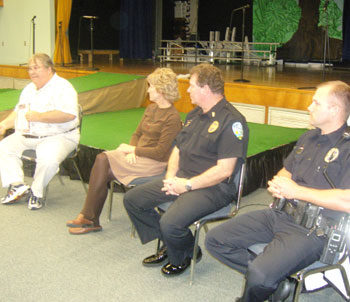BRADENTON – If all goes well, fishers and strollers will have a new pier at Manatee Beach in eight to 10 months.
Manatee County commissioners approved Option 2 of three options presented to them at a special meeting last week. Option 2 is to remove the existing pier and replace it with a conventional pier with a 15-foot elevation at a cost of $1.5 million.
Other options included removing the pier and replacing it with a lower elevation pier for $2 million, or repairing the existing pier at a cost of $1.7 million.
At the meeting, a representative of Bridge Design Associates presented photos of the existing structure showing pieces of concrete ready to fall off, gaping holes, large fissures, shattered concrete and freshly cracked concrete.
"Does the $1.5 million include engineering and permitting?" Commissioner Carol Whitmore asked.
Natural Resources Department Director Charlie Hunsicker said the cost for permitting and design would be an additional $92,112, and it has been budgeted.
"This direction from you is not to build this pier," Hunsicker said. "It is direction to design and permit it, and when it comes time to make the decision to build it, that’s when we’ll need to work with you to identify the funding.
"We’re asking for authority to continue the permit and design process. The permit has been on the way since September of last year. We’re about 2 to 3 weeks away from submitting our permit applications with your decision on the option."
Commissioner Donna Hayes asked when they would be negotiating the contract. Hunsicker said it would be at least four months to complete the permitting, prepare the bid documents and advertise for bid.
"I want to make this clear, there’s sufficient funds in the tourist development funds for the construction of this pier," Hunsicker stressed.
"Why would I want to go through the process of permitting and designing this if I didn’t have a plan to build it?" Commissioner Larry Bustle asked. "Let’s build it. I would like to vote today."
He asked if there are other enhancements that should be added to the pier. Hunsicker said they could add another 100 feet for recreational value.
"A bait shop would be nice, but we’re forgetting why people come to the Island and I don’t think we want to lose that and get commercial," Commissioner Carol Whitmore pointed out.
Commissioner Joe McClash said he would like to have the option of adding another 120 feet when the bid goes out and the board could decide at that time whether to spend the extra money for it.
He made the motion to accept Option 2, expedite it as soon as possible and authorize staff to extend it up to 120 feet and bring that option back. The motion was approved unanimously.


